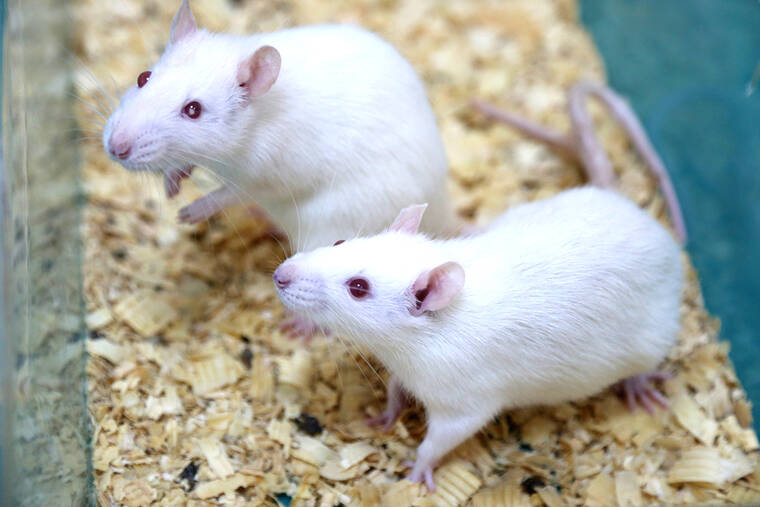If you’d prefer ‘Tidy Mouse’ tidied up elsewhere, here’s how to help him back outside
Like many people, I’ve watched the video of “Welsh Tidy Mouse” organizing his friend’s shed over and over. He reminds me of someone I knew. My mouse companion, Valentine, was rescued on a cold February night from a Craigslist poster who didn’t want him and quickly revealed his industrious nature. I converted a toddler playpen into chez Valentin by adding a running wheel, a water bottle, a food bowl and soft paper bedding along with plenty of blankets, paper towel rolls and small cardboard boxes for him to burrow and hide in, plus chew toys and treats. I thought it was superb. Valentine thought otherwise.
Apparently, cardboard-box rooms need two doors. I had cut only one. Val remedied the construction issues and added an exit in the playpen’s mesh siding, presumably to bring everything up to code. The soft straw nest I’d bought had the wrong dimensions and needed to be remodeled. It also needed a lining, which he created by shredding a paper towel. As his clever, meticulous personality emerged, I started giving him different materials—yarn, cotton balls, bits of fabric, a little ball—to see how he would use them. He tried to fix me up, too, lovingly grooming my hand.
Val demonstrated how bright, resourceful and devoted mice are. So it never surprises me that when winter sets in, the search for warmth, protection, water and food often leads them and other animals into human homes. I’m tempted to afford any mouse I see the If-You-Give-a-Mouse-a-Cookie treatment and persuade them to stay awhile, but wild mice belong in nature. Fortunately, there are simple, humane ways to help them return there.
The easiest way to avoid having uninvited guests in your home is to keep them from entering in the first place. Rats can slip through holes the size of a quarter, and mice fit through holes the size of a dime. Use a flashlight to find holes, cracks and gaps around pipes and doors, and seal them with foam sealant, hardware cloth or metal flashing. Door sweeps can keep small animals from squeezing through doorways.
Make the area unattractive to small animals by keeping counters, floors and cabinets free of crumbs and storing dry food and companion animal food in chew-proof containers. Putting your animals’ food away overnight is also highly effective—often, that’s all it takes to persuade unwelcome visitors to find other accommodations. It’s also helpful to keep trash and recycling receptacles tightly sealed and to avoid feeding animals outdoors. Removing hiding places next to the house goes a long way, too, including keeping grass and plants trimmed and storing outdoor furniture, grills and wood piles away from exterior walls.
If rodents have decided to party at your pad, you can encourage them to pack their things and go by putting cloves or cotton balls soaked in ammonia or peppermint oil in the areas they frequent. Mice and rats strongly dislike these smells. Aluminum foil balls, a radio or strobe lights can work, too.
Never use glue traps or poisons, which are extremely cruel. Animals ensnared in glue traps rip off patches of skin and fur as they struggle to escape, even chewing their own limbs off in desperation, and they can suffocate in the glue. Makers of these traps commonly tell people to throw the live animal out with the trap, and the victim may suffer for days before eventually dying. In addition to inflicting a painful death on mice and rats, poisons are highly toxic to humans, companion animals and wildlife. And lethal methods frequently backfire, since the resultant spike in the food supply causes survivors to breed at accelerated rates and newcomers arrive for the still-available resources.
Rodents are just trying to get by like the rest of us. The least we can do is show them some compassion and help them stay in their own homes.
Michelle Reynolds is a senior writer for the PETA Foundation, www.PETA.org.


